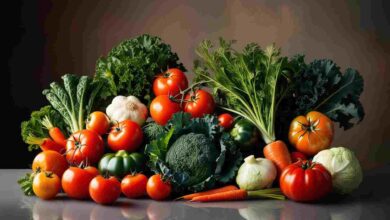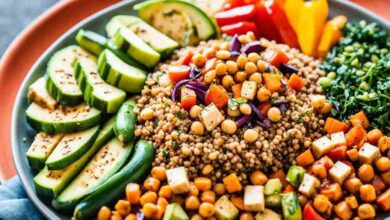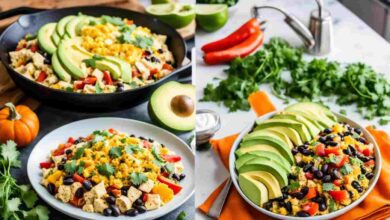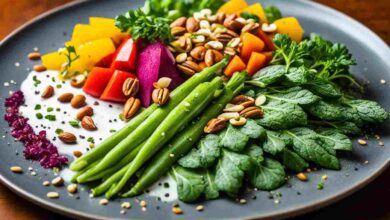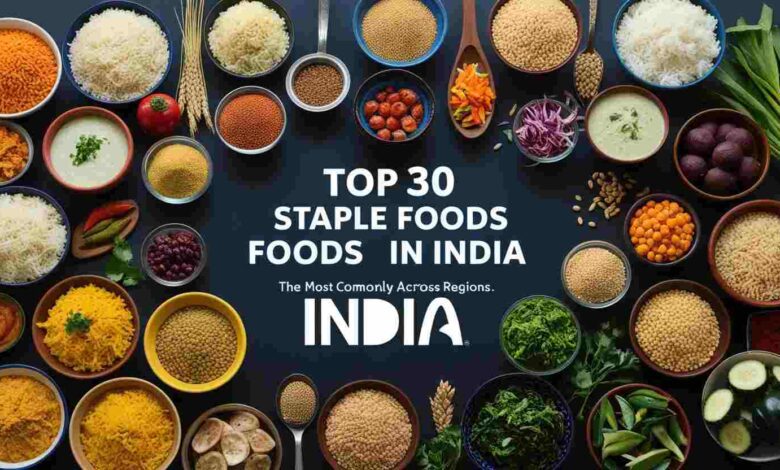
Discover the top 30 staple foods in India that form the foundation of its diverse cuisine. From rice and wheat to lentils, millets, and vegetables, explore the essential ingredients that define Indian meals. Learn about the most commonly consumed foods across regions and their nutritional benefits.
Here is a selection of some of the most popular Indian dishes to eat in India :
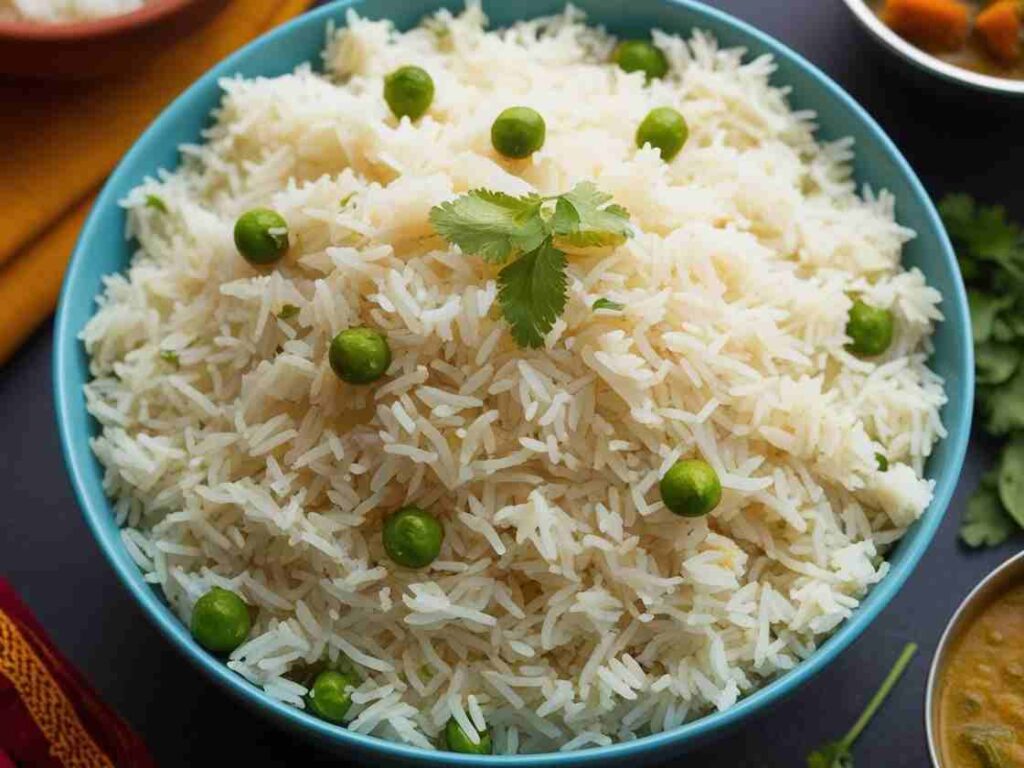
1. Rice (Chawal)
Rice is the most widely consumed staple in India, especially in southern and eastern regions. Whether it’s aromatic basmati or short-grain sona masoori, rice is a daily essential served alongside curries, dals, and stir-fries.
2. Wheat (Gehin)
Wheat is the staple grain of northern India, used to make a variety of breads, including chapati, roti, and paratha. Whole wheat flour, known as atta, is a dietary essential for millions.
3. Lentils (Dal)
Lentils, or dal, are rich in protein and form the base of many Indian meals. Common varieties include toor dal, moong dal, masoor dal, and urad dal, each with its unique flavor and preparation style.
4. Chickpeas (Chana)
Chana, or chickpeas, are popular across India. They are used in dishes like chana masala and chole, offering a high-protein, fiber-rich meal option.
5. Millet (Ragi, Bajra, Jowar)
Millets like ragi (finger millet), bajra (pearl millet), and jowar (sorghum) are ancient grains that are highly nutritious. They are gaining popularity again as healthier alternatives to rice and wheat.
6. Barley (Jau)
Jau, or barley, is consumed in various forms in India, often in soups or as a grain alternative to rice, known for its cooling and digestive benefits.
7. Sorghum (Jowar)
Jowar is a staple in many rural areas and is often ground into flour for making bread. It’s gluten-free and packed with fiber.
8. Pearl Millet (Bajra)
Bajra is another ancient grain widely consumed in Rajasthan and Gujarat. Bajra roti is often paired with dal or sabzi for a complete meal.
9. Corn (Makka)
Makka (corn) is a major staple in the Punjab region. It’s used to make makki di roti, often served with sarson da saag (mustard greens).
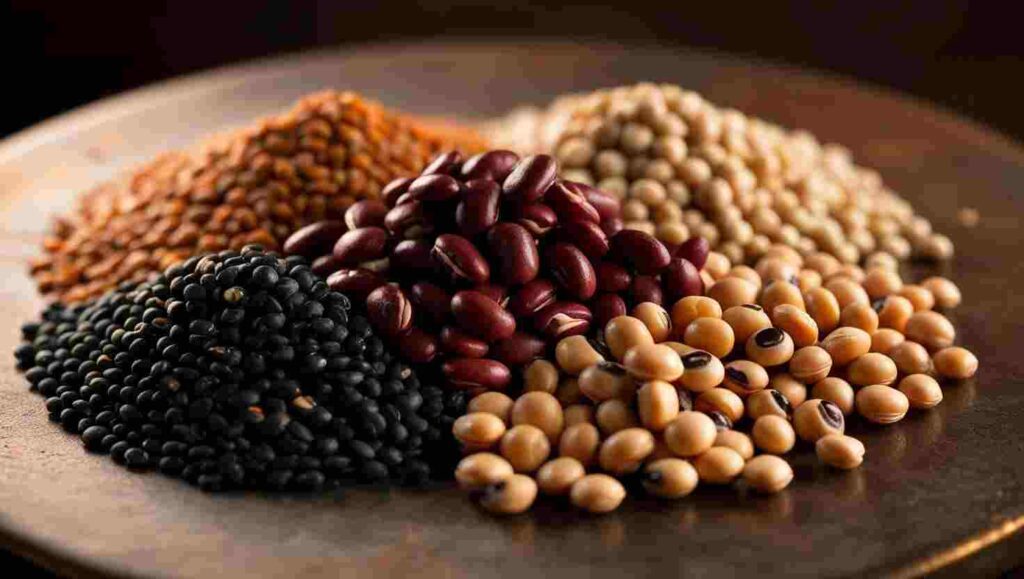
10. Pulses
In addition to lentils, India’s love for pulses includes rajma (kidney beans), lobia (black-eyed peas), and moth beans, offering versatile and protein-packed dishes.
11. Potatoes (Aloo)
Potatoes are one of India’s most consumed vegetables. Whether mashed, fried, or curried, aloo plays a crucial role in many regional dishes.
12. Onions (Pyaaz)
A staple in almost every Indian kitchen, onions add depth and flavor to numerous curries, gravies, and snacks.
13. Tomatoes (Tamatar)
Tomatoes are the backbone of many Indian curries, sauces, and chutneys. They provide acidity, sweetness, and balance to spicy dishes.
14. Mustard Greens (Sarson)
In northern India, especially in Punjab, sarson da saag (mustard greens) is a popular winter dish served with makki di roti.
15. Spinach (Palak)
Palak (spinach) is widely used across the country, often cooked into curries like palak paneer or used in a variety of dals and sabzis.
16. Eggplant (Baingan)
Baingan (eggplant), also known as brinjal, is central to dishes like baingan bharta, a roasted, spiced eggplant dish that’s a staple in many Indian households.
17. Okra (Bhindi)
Bhindi, or okra, is another popular vegetable in India, often stir-fried or curried and eaten with rice or roti.
18. Cauliflower (Phool Gobhi)
Cauliflower is commonly used in Indian cooking, particularly in dishes like aloo gobhi and gobhi paratha.
19. Green Peas (Matar)
Matar (green peas) are often combined with potatoes or paneer to create delicious, nutritious curries like matar paneer.
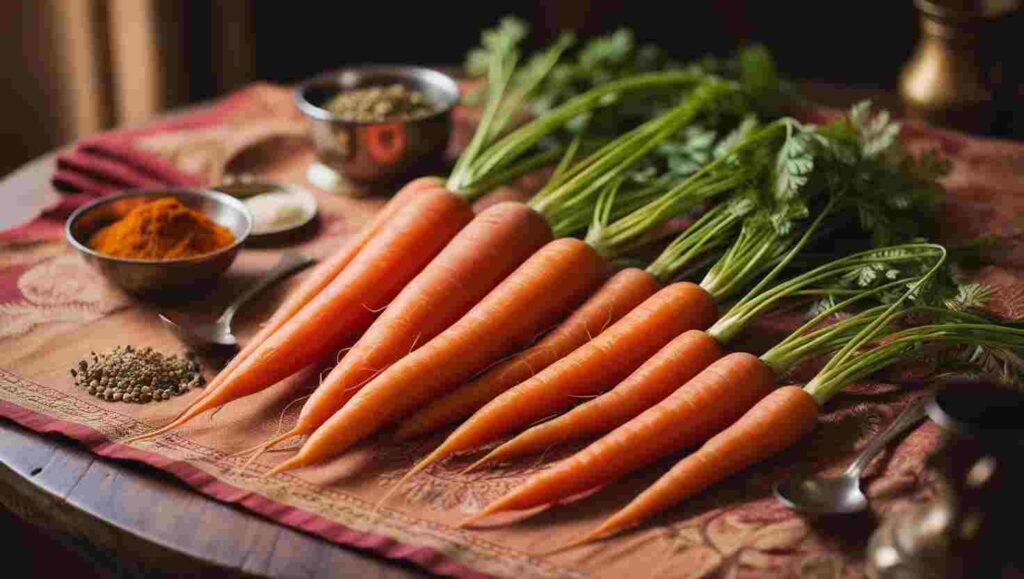
20. Carrots (Gajar)
Carrots are versatile in Indian cuisine, used in savory dishes like gajar matar and in desserts such as gajar ka halwa.
21. Coconut
Coconut is an integral part of south Indian cuisine. It’s used in grated form, as coconut milk, or as coconut oil in dishes like coconut chutney and sambar.
22. Tamarind (Imli)
Imli (tamarind) is widely used in south Indian and Gujarati cuisine for its tangy flavor. It is an essential ingredient in chutneys, sambars, and rasams.
23. Curd (Dahi)
Dahi, or yogurt, is consumed daily in many parts of India. It’s eaten plain, used in marinades, or served as raita alongside spicy meals to cool the palate.
24. Paneer
Paneer, or Indian cottage cheese, is a significant protein source, especially for vegetarians. It’s used in popular dishes like paneer butter masala and palak paneer.
25. Ghee
Ghee (clarified butter) is an indispensable ingredient in Indian households. It is used for cooking, frying, and even in sweets, adding richness and flavor to food.
26. Butter
Butter is another common ingredient, especially in north Indian dishes like butter chicken and parathas served with a dollop of butter.
27. Fish
In coastal regions, especially in West Bengal, Kerala, and Goa, fish is a primary staple. Fish curries, fried fish, and fish biryanis are popular dishes in these regions.
28. Lamb/Goat (Mutton)
Mutton (goat meat) is a popular protein choice in India, especially in dishes like mutton curry, rogan josh, and biryani.
29. Chicken
Chicken is consumed across the country, with popular dishes like butter chicken, chicken tikka masala, and chicken biryani dominating Indian cuisine.
30. Pulses (Legumes)
In addition to lentils and chickpeas, India uses a variety of other pulses like moth beans, pigeon peas, and green gram, all of which provide protein to Indian diets.
What is the most consumed food product in India?
The most consumed food product in India is rice. As a staple food across much of the country, especially in southern and eastern regions, rice is an essential part of daily meals. It is commonly served with curries, dals, and vegetables. In northern India, wheat, primarily in the form of chapati or roti, also holds a significant place in the diet. Together, rice and wheat dominate Indian cuisine, providing essential carbohydrates and nutrients to the majority of the population across diverse regions.
Which fruit is most eaten in India?

